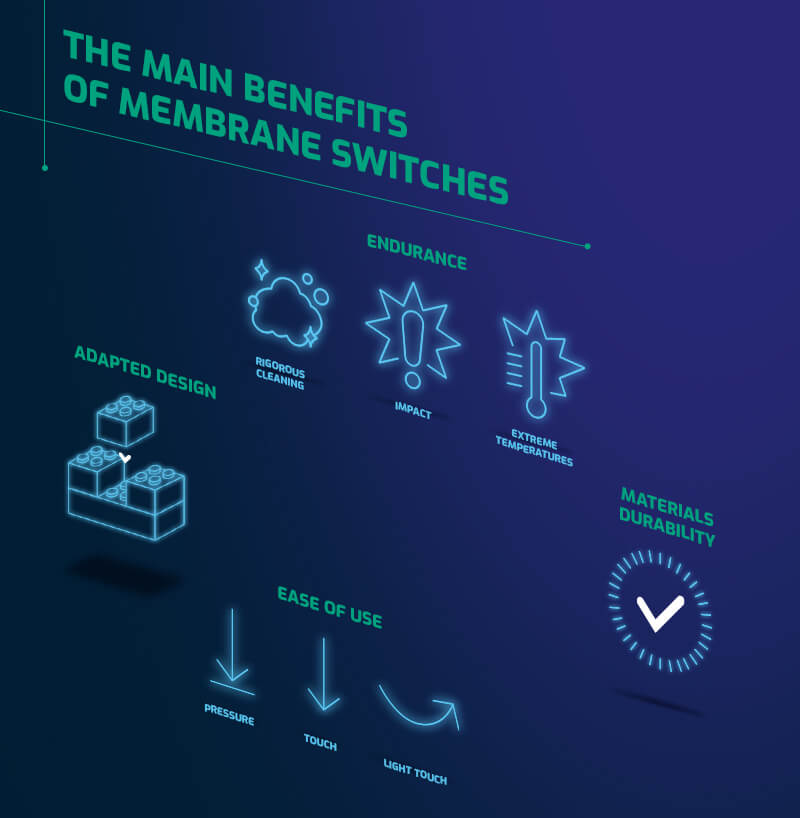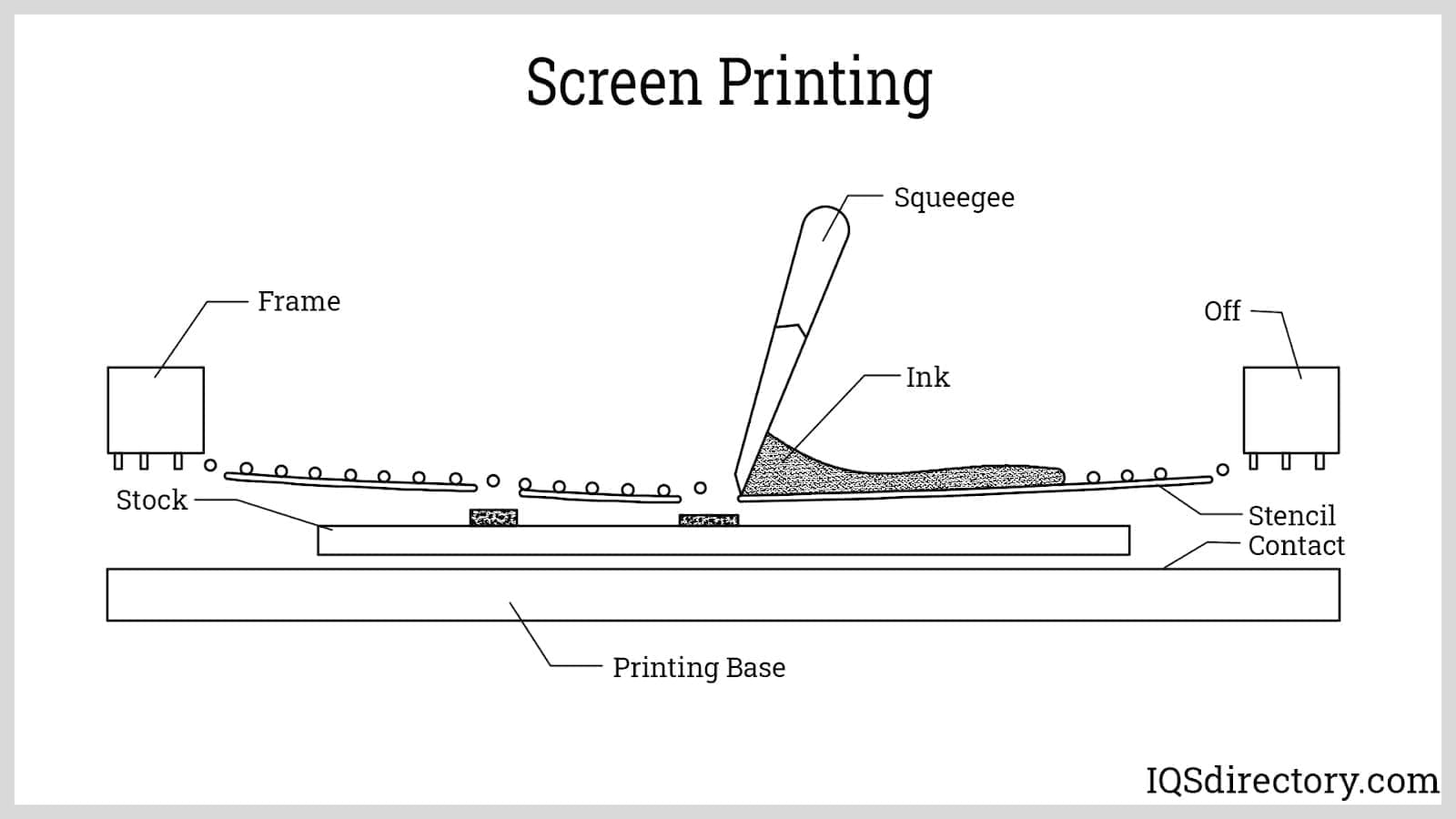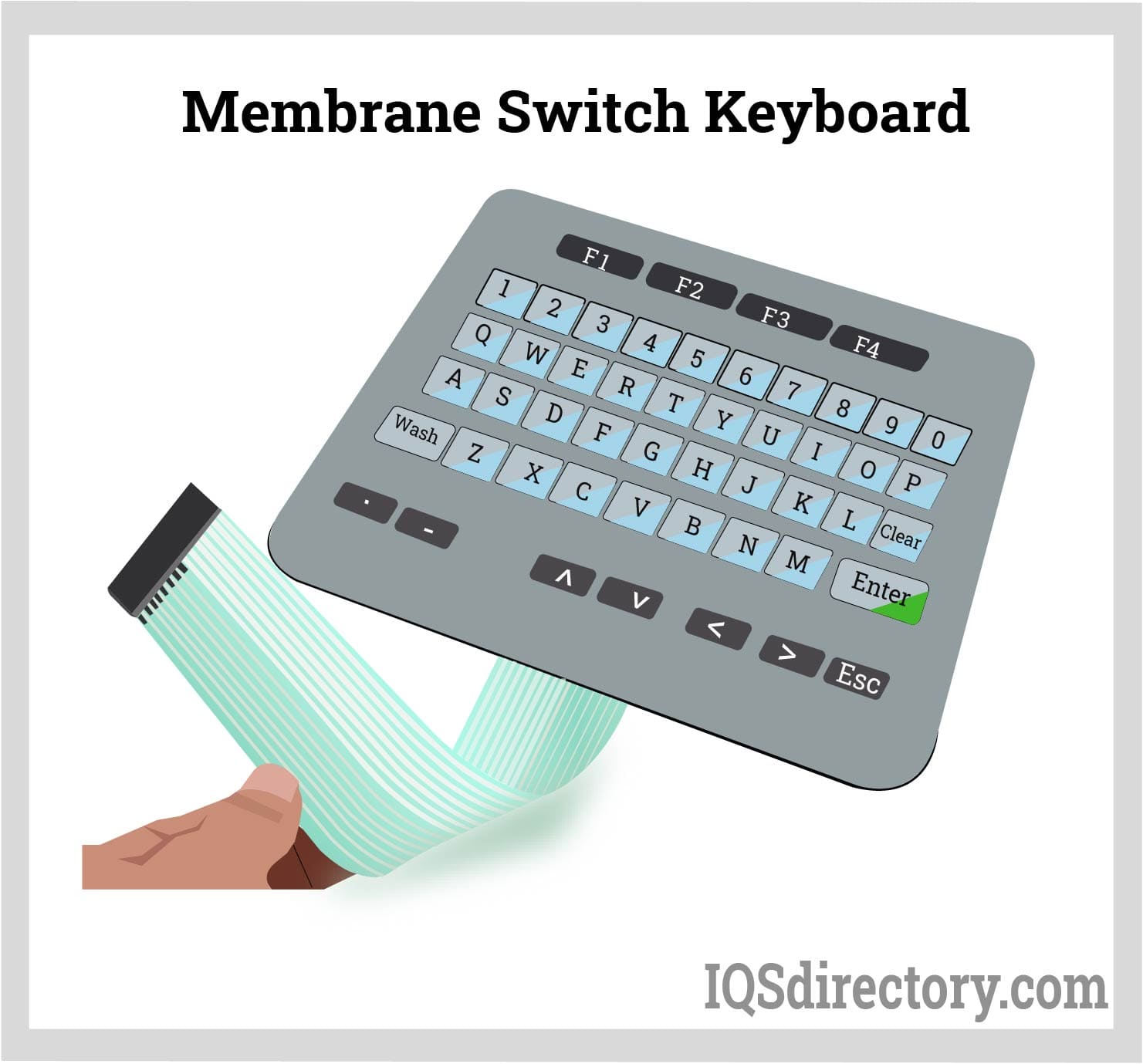Seven smart ways to integrate membrane switch into automation systems
The Manufacturing Process Behind Membrane Layer Switch Over: What You Required to Know
The manufacturing process behind membrane layer switches combines careful style, material option, and quality assurance. It starts with comprehending the details of membrane switch design and progresses with numerous phases, consisting of material choices and printing techniques. Each phase plays an important duty in making certain capability and longevity. Nonetheless, the intricacies of layer construction and the strenuous screening criteria may disclose understandings that are not right away noticeable. What exists beyond these fundamental aspects?
Recognizing Membrane Layer Switch Layout
Membrane buttons might appear simple at initial look, their layout involves detailed considerations that assure functionality and resilience. The style process begins with a detailed understanding of individual requirements, consisting of the user interface's desired application and environmental aspects. Functional designs is a vital aspect, as the design must promote convenience of use while making certain that responsive feedback fulfills individual expectations.Moreover, the layering of parts, such as graphic overlays, sticky layers, and conductive traces, should be precisely engineered. membrane switch. This layered setup not just influences the button's responsiveness but likewise impacts its long life. Attention is provided to the securing techniques employed to safeguard versus moisture and dust, which might compromise efficiency. Furthermore, design considerations reach appearances, where color pattern and visual clarity improve user experience. Inevitably, the style of membrane layer changes balances performance, user experience, and toughness, ensuring that they meet the demands of different applications successfully
Materials Utilized in Membrane Layer Switch Over Production
When picking products for membrane layer button production, it is vital to contemplate both efficiency and resilience. The key products include polyester and polycarbonate films, which give flexibility and toughness. These movies are commonly coated with glue to assure correct bonding to substrates. Conductive inks, normally composed of silver or carbon, are critical for developing electric links within the switch, enabling trustworthy operation.Additionally, a safety layer, such as a tough layer, is often applied to enhance scratch resistance and durability. The option of backing product, such as acrylic or foam, can substantially affect the button's tactile feel and total customer experience. Various ecological elements, consisting of temperature level and moisture, should direct product choice to ensure peak performance in certain applications. Ultimately, the right mix of materials adds to the membrane layer button's capability and life expectancy, making notified selections necessary for suppliers.
The Printing Refine: Creating Video and Text
The printing process in membrane button production plays a considerable function in producing premium graphics and message. Numerous visuals style strategies are employed to guarantee aesthetic allure and capability, while mindful ink selection methods are essential for longevity and efficiency. Understanding these elements is basic for achieving best lead to membrane switch layout.
Graphic Style Techniques
Graphic design techniques play a crucial role in the printing procedure of membrane layer switches, as they specify exactly how graphics and message will ultimately appear on the final item. Efficient graphic layout involves the critical usage of typefaces, layouts, and shades to boost readability and aesthetic allure. Designers frequently make use of vector graphics for scalability, making sure that images remain sharp at various sizes. In addition, focus to contrast and positioning is essential, as it influences individual interaction and visual high quality. The consolidation of branding elements, such as logos, must be handled with like keep brand integrity. On the whole, thoughtful visuals style techniques add considerably to the capability and appearance of membrane layer switches, affecting customer experience and item performance.
Ink Selection Techniques
Picking the proper ink is important for attaining the desired visual quality and durability in membrane layer switch production. Different ink kinds are utilized, consisting of solvent-based, water-based, and UV-curable inks. Each kind offers unique qualities, such as adhesion, flexibility, and resistance to environmental factors. Solvent-based inks are commonly favored for their longevity and dynamic shades, while water-based inks are more eco-friendly yet might have constraints in adhesion. UV-curable inks give quick treating and robust performance. Furthermore, color matching methods guarantee that the selected inks line up with style specifications. Ultimately, the selection of ink must think about variables such as application method, substratum compatibility, and end-use demands to attain exceptional outcomes in membrane layer button graphics and message.
Layer Building and Assembly

Product Selection Process
A cautious selection of products is essential in the production procedure of membrane buttons, as it straight affects capability and resilience. The primary materials made use of include polyester, polycarbonate, and numerous conductive inks. Polyester is frequently preferred for its exceptional resistance to chemicals and abrasion, making it suitable for harsh atmospheres. Polycarbonate, on the other hand, offers remarkable clearness and impact resistance, which is advantageous for applications calling for why not check here presence and effectiveness. Conductive inks, commonly made up of silver or carbon, are vital for producing dependable electrical paths. Furthermore, the selection of glue products affects the overall stability of the switch - membrane switch. Evaluating variables such as ecological direct exposure, tactile responses, and aesthetic requirements overviews producers in selecting the very best materials for their specific applications
Layer Adhesion Techniques
Sticking layers in membrane switch building is an important process that ensures functionality and durability. Numerous attachment strategies are employed to safeguard perfect bonding between layers, which normally include the use of adhesives, warmth, and stress. Pressure-sensitive adhesives (PSAs) are generally used for their simplicity of application and instant bonding capacities. In addition, thermal bonding methods can be applied, where heat is made use of to activate glue properties, safeguarding a strong bond. The choice of adhesion technique mainly depends on the products included and the certain application needs of the membrane switch. Proper placement and uniform application of adhesives are vital to avoid defects, securing the switch runs efficiently throughout its desired life expectancy.
Quality Assurance Actions
Ensuring high quality control during the layer construction and setting up of membrane buttons is necessary for preserving performance and reliability. This procedure commonly involves several crucial measures, consisting of complete examinations at each stage of manufacturing. Manufacturers make use of sophisticated testing methods, such as peel tests and attachment assessments, to verify the honesty of layer bonds. In addition, aesthetic assessments are conducted to recognize any issues in printing or product variances. Environmental conditions, such as temperature level and moisture, are very carefully kept an eye on to assure suitable treating and attachment. Moreover, normal calibration of tools helps preserve accurate manufacturing criteria. By implementing these quality assurance procedures, makers can greatly lower the risk of product failing, assuring that the last membrane changes satisfy the called for specs and consumer assumptions.
Checking and Top Quality Control Steps

Advancements in Membrane Layer Switch Technology
As improvements in innovation proceed to develop, membrane layer buttons are benefiting from ingenious advancements that boost Click Here their performance and individual experience. One significant development is the integration of capacitive touch innovation, which enables more instinctive and responsive individual interfaces. This shift not only enhances aesthetics but likewise lowers mechanical wear and tear, expanding the life-span of the switches.Additionally, innovations in visuals overlay materials have led to enhanced toughness and resistance to ecological aspects such as dampness and UV light. These products currently supply improved clearness and brightness, more boosting the visual appeal.Furthermore, the incorporation of clever modern technology is transforming membrane layer switches right into interactive control board, allowing connection with IoT tools. This connection fosters a seamless individual experience, paving the way for applications in various sectors, from medical care to consumer electronics. Collectively, these technologies setting membrane switches over as essential parts in contemporary device design.
Frequently Asked Concerns
How much time Does the Membrane Switch Manufacturing Process Take?
The duration of the membrane layer button production procedure can differ significantly. Aspects such as intricacy, products used, and production quantity impact timelines, with common production varying from a few days to a number of weeks for completion.
What Are the Typical Applications for Membrane Layer Switches?
Membrane layer switches are typically made use of in various markets, consisting of auto controls, household appliances, clinical tools, and consumer electronics (membrane switch). Their versatility and resilience make them excellent for applications requiring straightforward interfaces and reputable performance in varied environments
Can Membrane Changes Be Custom-made for Certain Needs?

What Is the Lifespan of a Regular Membrane Layer Change?
The life expectancy of a normal membrane switch varies, however typically, it varies from 1 to 5 million cycles. Variables such as usage, setting, and worldly quality significantly affect durability and overall performance over time.

Are Membrane Switches Eco-friendly?
The environmental friendliness of membrane layer changes varies. Some materials made use of may not be recyclable, while others can be environment-friendly. The total effect depends on manufacturing methods and products, demanding careful factor to consider during choice and disposal. The manufacturing process behind membrane switches combines mindful style, product option, and quality control. It starts with comprehending the details of membrane button layout and progresses via various stages, consisting of material choices and printing techniques. When selecting products for membrane switch manufacturing, it is important to contemplate both performance and sturdiness. A mindful selection of products is necessary in the production process of membrane layer switches, as it directly influences performance and longevity. The choice of adhesion method read the full info here mainly depends on the materials entailed and the particular application demands of the membrane layer button.